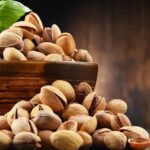Introduction:
Embarking on a fitness journey involves not only hitting the gym but also navigating the realm of nutrition. In this guide, we delve into common misconceptions surrounding exercise, diet, and their interconnectedness. By deciphering myths and embracing truths, individuals can make informed choices to optimize their fitness endeavors.
I Am an Athlete Because I Exercise Regularly, Right?
The label “athlete” isn’t easily earned by the occasional gym-goer. True athletes engage in daily (or nearly daily) physical activity for extended durations. For those not classified as sedentary, the impact on nutrition is subtle:
- While energy expenditure increases slightly, it’s not substantial enough to warrant a significant boost in daily caloric intake. Adjusting current eating habits to maintain satiety with a similar calorie count is likely more beneficial for appetite regulation.
- Adequate hydration is crucial. Opt for water or isotonic drinks during and post-exercise instead of sugary sodas.
Gym-Goers: Do You Need Sports Supplements?
Contrary to popular belief, gym-goers generally don’t require shakes or supplements. Post-exercise shakes may be recommended in specific cases of muscle mass gain, but it’s essential to note that muscle development can be achieved through a balanced intake of carbohydrates and proteins. Recovery drinks find relevance after extended aerobic activities lasting over 3 hours.
Protein Intake for Muscle Gain: Separating Fact from Fiction
The notion that increased protein consumption is vital for muscle gain is a prevalent myth. While proteins are crucial, our regular diets often already provide an excess. Focusing on effective exercises tailored to individual needs, rather than mimicking others, is key to muscle development.
Many attribute their fitness struggles to dietary choices, leading to uninspiring diets like chicken and rice or reliance on synthetic products. This YouTube video discusses these cases in more detail.
Compensating Exercise with Indulgent Eating: A Common Pitfall
Granting oneself permission to indulge in calorie-rich foods after exercising is a common but misguided practice. The calories burned in the gym are often overestimated, while the calories consumed during indulgence are underestimated. For instance:
- Running for 30 minutes on a treadmill might burn around 500 calories.
- A 45-minute weightlifting session might expend approximately 300 calories.
- Consuming an entire pizza could introduce 1,000-1,500 calories.
Compensating for energy expenditure becomes challenging, making it crucial to prioritize health. Weight-related arguments overlook the importance of choosing nutritious, natural, home-cooked foods over processed alternatives.
Gym on an Empty Stomach to Torch Belly Fat? Think Again.
Exercising on an empty stomach as a strategy for burning more belly fat is another pervasive myth. The reality is quite the opposite—working out without breakfast can lead to dizziness, decreased performance, and muscle protein consumption. Fasted workouts, if considered, should be purposeful and guided by specialists.
Conclusion: Navigating the Realities of Fitness and Nutrition
In conclusion, separating fitness facts from fiction is crucial for anyone embarking on a journey towards a healthier lifestyle. By dispelling myths surrounding exercise and nutrition, individuals can make informed choices that contribute to long-term well-being. This comprehensive guide serves as a beacon, guiding readers through the intricacies of gym culture, dietary choices, and the pursuit of a balanced, healthy life.













